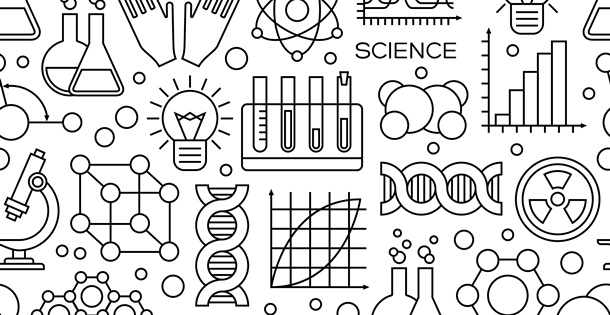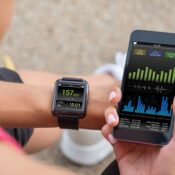The inventor tinkering in a garage and coming up with a better mousetrap is a cherished American image. These days, that tinkering is likely to take place at a sophisticated computer or high-powered microscope. But no matter how they do their work, scientists continue to come up with ingenious and useful advances. Here are a few gee-whiz breakthroughs that are already helping us, or soon will.
Helping Hearts
Given that heart disease is the leading cause of death in the country for both men and women, it’s no surprise that researchers are always looking for better procedures and devices to assist people with heart trouble. From the University of Michigan comes the recently approved HeartMate II, a device that’s implanted in the chest to help a failing heart pump blood and keep patients alive until they can receive a transplanted heart. The new device is smaller—about the size of a D-cell battery —than earlier versions of heart-assisting implants, making it more suitable for people with smaller bodies, like women and adolescents. According to research published in The New England Journal of Medicine, the HeartMate II helped 75 percent of 133 patients stay alive —and improved heart function and quality of life—for at least six months or until a donor heart became available. One patient even recovered to the point where a transplant was no longer needed.
Cool It
Folks in cardiac arrest need to be cooled down —and quickly—to improve their chance of recovery and to avoid brain damage. But how? Methods such as packing unconscious patients in ice can take hours, which makes survival dicey. Now, emergency medical personnel have the Thermosuit, a plastic suit filled with cold water that reduces body temperature in approximately 30 minutes. Survival rates have improved in the hospitals where the Thermosuit is in use; a National Institutes of Health-sponsored trial will soon be underway to test the device further.
Get Your Own Cells
The heart muscle tends to become weaker after a heart attack because it doesn’t regenerate itself well. One day, heart patients may be able to use their own skin cells to repair their hearts, using a new type of stem cells called induced pluripotent stem cells (iPS). Like embryonic stem cells, iPS cells have the potential to develop into any type of cell in the body. A team of scientists at University of California, Los Angeles has grown functioning cardiac cells in the lab using cells from mouse skin reprogrammed with iPS cells. Scientists hope that this will lead to heart patients using their own skin cells to create iPS lines that will repair and regenerate.
Suit Smarts
Fabrics are a basic human need. And now, “smart textiles” do more than the ancient functions of protecting us from the environment and making us look good. They can sense certain stimuli and adapt or respond accordingly, explains Tushar K. Ghosh, Ph.D., a textiles professor at North Carolina State University in Raleigh. Among the many purposes are: protective gear for firefighters; garments that monitor patients’ vital signs like blood pressure and temperature; the delivery of drugs; and to serve as antibacterial or artificial skin for people with severe burns. In the works are fibers that mimic human muscle fibers, which hold promise for prosthetics and robotics. Ghosh and his team are researching a “heatingcooling garment, with fibers that get smaller or larger,” he says. “The idea is to create a piece of clothing that can let the wind come through or tune it closed if it gets too windy or cold.”
“No-Stick” Bandages
In the same vein, an electrical engineering researcher at Mississippi State University has developed a “smart” adhesive bandage that can check cholesterol, insulin, and blood chemistry without needles—a boon to people with diabetes who are used to sticking themselves many times per day. The bandage reads people’s biochemistry right through their skin. The inventor, Ray Winton, expects the bandage to be commercially available in one or two years.
Mag-netting Cancer Cells
Magnets: not just for science fair projects anymore! Scientists at the Georgia Institute of Technology have found a way to use magnets to catch cancer cells in the bodies of mice with ovarian cancer. They hope that this will be useful in diagnosing or slowing the spread of this deadly cancer in women. The way it may work: A peptide (a protein-like molecule) designed to attach to ovarian cancer cells is fastened to very tiny magnetic particles and injected into the abdomen. The peptides latch on to the cancer cells, and a magnetic filtering device outside the body pulls them out. Other researchers have developed magnetic nanoparticles that show promise for spotting and getting rid of harmful.
Crafty Solutions
Gas prices of late have convinced just about everyone that we need better ways to get around. For Leik Myrabo, Ph.D., an engineer-ing physics professor at Rensselaer Polytechnic Institute, one answer is the Lightcraft. “The Light-craft will move goods and people around the planet in more environmentally friendly ways, using power from renewable energy sources, such as the sun or wind,” he explains. The Lightcraft doesn’t carry its own energy or fuel, instead moving by energy beamed to it from remote laser or microwave power plants, either on Earth or in space (hence the name Lightcraft, a hyperenergetic craft flying on a powerful beam of light). That means it can weigh significantly less than conventional vehicles, such as jet planes and rockets with their massive fuel loads. Myrabo has been working on the concept for more than 30 years, but only in the last few years have power-beaming sources become cheap enough to make the Lightcraft feasible. He estimates that in three to five years, his company, Lightcraft Technologies, Inc., will be able to launch something to the edge of space; moving people will follow within a few more years. “This is species-changing technology,” he says, “sustainable global mobility that will enable you to go anywhere on the planet in 45 minutes or to the moon in a few hours.”
Become a Saturday Evening Post member and enjoy unlimited access. Subscribe now



